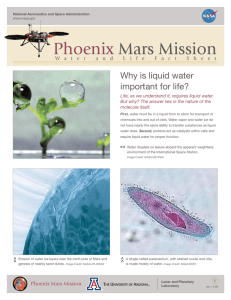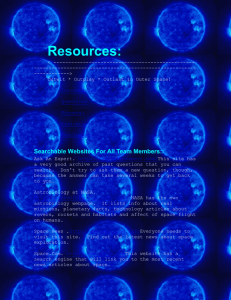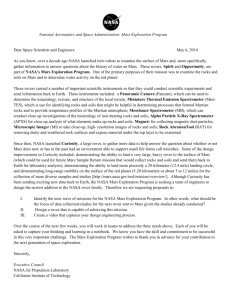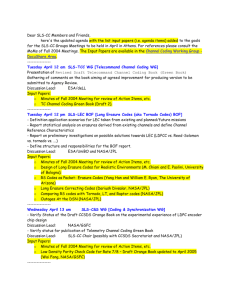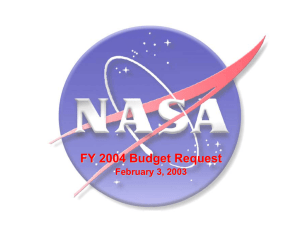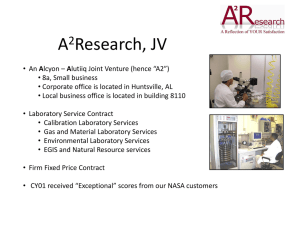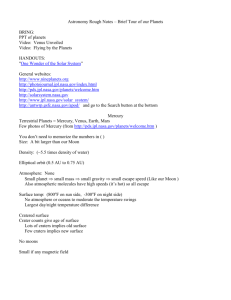Key Solution Takeaways National Aeronautics and
advertisement
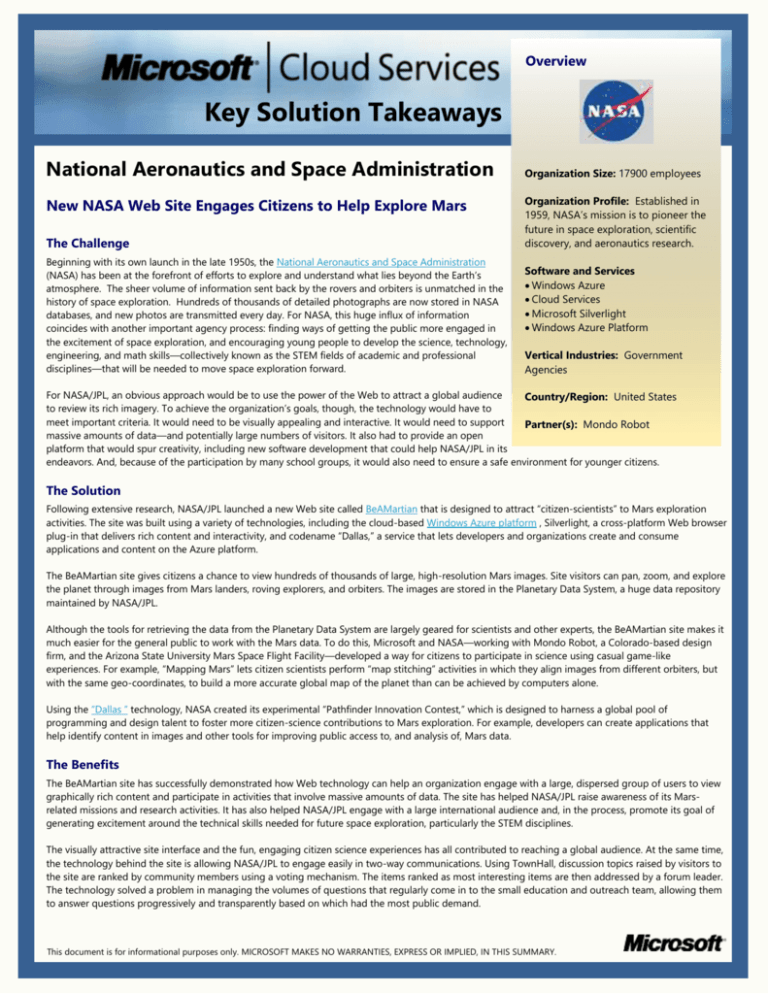
Overview Key Solution Takeaways National Aeronautics and Space Administration New NASA Web Site Engages Citizens to Help Explore Mars The Challenge Beginning with its own launch in the late 1950s, the National Aeronautics and Space Administration (NASA) has been at the forefront of efforts to explore and understand what lies beyond the Earth’s atmosphere. The sheer volume of information sent back by the rovers and orbiters is unmatched in the history of space exploration. Hundreds of thousands of detailed photographs are now stored in NASA databases, and new photos are transmitted every day. For NASA, this huge influx of information coincides with another important agency process: finding ways of getting the public more engaged in the excitement of space exploration, and encouraging young people to develop the science, technology, engineering, and math skills—collectively known as the STEM fields of academic and professional disciplines—that will be needed to move space exploration forward. Organization Size: 17900 employees Organization Profile: Established in 1959, NASA’s mission is to pioneer the future in space exploration, scientific discovery, and aeronautics research. Software and Services Windows Azure Cloud Services Microsoft Silverlight Windows Azure Platform Vertical Industries: Government Agencies For NASA/JPL, an obvious approach would be to use the power of the Web to attract a global audience Country/Region: United States to review its rich imagery. To achieve the organization’s goals, though, the technology would have to meet important criteria. It would need to be visually appealing and interactive. It would need to support Partner(s): Mondo Robot massive amounts of data—and potentially large numbers of visitors. It also had to provide an open platform that would spur creativity, including new software development that could help NASA/JPL in its endeavors. And, because of the participation by many school groups, it would also need to ensure a safe environment for younger citizens. The Solution Following extensive research, NASA/JPL launched a new Web site called BeAMartian that is designed to attract “citizen-scientists” to Mars exploration activities. The site was built using a variety of technologies, including the cloud-based Windows Azure platform , Silverlight, a cross-platform Web browser plug-in that delivers rich content and interactivity, and codename “Dallas,” a service that lets developers and organizations create and consume applications and content on the Azure platform. The BeAMartian site gives citizens a chance to view hundreds of thousands of large, high-resolution Mars images. Site visitors can pan, zoom, and explore the planet through images from Mars landers, roving explorers, and orbiters. The images are stored in the Planetary Data System, a huge data repository maintained by NASA/JPL. Although the tools for retrieving the data from the Planetary Data System are largely geared for scientists and other experts, the BeAMartian site makes it much easier for the general public to work with the Mars data. To do this, Microsoft and NASA—working with Mondo Robot, a Colorado-based design firm, and the Arizona State University Mars Space Flight Facility—developed a way for citizens to participate in science using casual game-like experiences. For example, “Mapping Mars” lets citizen scientists perform “map stitching” activities in which they align images from different orbiters, but with the same geo-coordinates, to build a more accurate global map of the planet than can be achieved by computers alone. Using the “Dallas ” technology, NASA created its experimental “Pathfinder Innovation Contest,” which is designed to harness a global pool of programming and design talent to foster more citizen-science contributions to Mars exploration. For example, developers can create applications that help identify content in images and other tools for improving public access to, and analysis of, Mars data. The Benefits The BeAMartian site has successfully demonstrated how Web technology can help an organization engage with a large, dispersed group of users to view graphically rich content and participate in activities that involve massive amounts of data. The site has helped NASA/JPL raise awareness of its Marsrelated missions and research activities. It has also helped NASA/JPL engage with a large international audience and, in the process, promote its goal of generating excitement around the technical skills needed for future space exploration, particularly the STEM disciplines. The visually attractive site interface and the fun, engaging citizen science experiences has all contributed to reaching a global audience. At the same time, the technology behind the site is allowing NASA/JPL to engage easily in two-way communications. Using TownHall, discussion topics raised by visitors to the site are ranked by community members using a voting mechanism. The items ranked as most interesting items are then addressed by a forum leader. The technology solved a problem in managing the volumes of questions that regularly come in to the small education and outreach team, allowing them to answer questions progressively and transparently based on which had the most public demand. This document is for informational purposes only. MICROSOFT MAKES NO WARRANTIES, EXPRESS OR IMPLIED, IN THIS SUMMARY.
